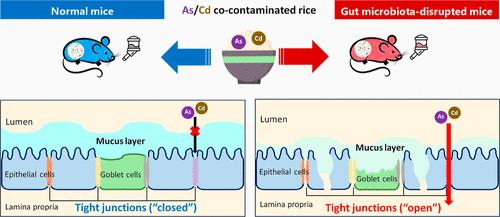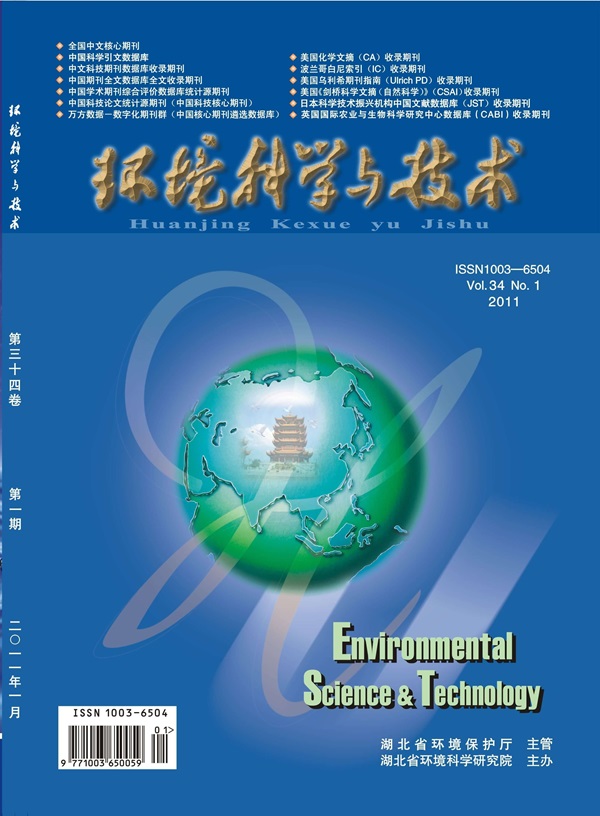Gut Dysbiosis Exacerbates Intestinal Absorption of Cadmium and Arsenic from Cocontaminated Rice in Mice Due to Impaired Intestinal Barrier Functions
IF 10.8
1区 环境科学与生态学
Q1 ENGINEERING, ENVIRONMENTAL
引用次数: 0
Abstract
Globally, humans face gut microbiota dysbiosis; however, its impact on the bioavailability of cadmium (Cd) and arsenic (As) from rice consumption─a major source of human exposure to these metals─remains unclear. In this study, we compared Cd and As accumulation in the liver and kidneys of mice with disrupted gut microbiota (administered cefoperazone sodium), restored microbiota (administered probiotics and prebiotics following antibiotic exposure), and normal microbiota, all after consuming cocontaminated rice. Compared to normal mice, microbiota-disrupted mice exhibited 30.9–119% and 30.0–100% (p < 0.05) higher Cd and As levels in tissues after a 3 week exposure period. The increased Cd and As bioavailability was not due to changes in the duodenal expression of Cd-related transporters or As speciation biotransformation in the intestine. Instead, it was primarily attributed to a damaged mucus layer and depleted tight junctions associated with gut dysbiosis, which increased intestinal permeability. These mechanisms were confirmed by observing 34.3–74.3% and 25.0–75.0% (p < 0.05) lower Cd and As levels in the tissues of microbiota-restored mice with rebuilt intestinal barrier functions. This study enhances our understanding of the increased risk of dietary metal(loid) exposure in individuals with gut microbiota dysbiosis due to impaired intestinal barrier functions.

求助全文
约1分钟内获得全文
求助全文
来源期刊

环境科学与技术
环境科学-工程:环境
CiteScore
17.50
自引率
9.60%
发文量
12359
审稿时长
2.8 months
期刊介绍:
Environmental Science & Technology (ES&T) is a co-sponsored academic and technical magazine by the Hubei Provincial Environmental Protection Bureau and the Hubei Provincial Academy of Environmental Sciences.
Environmental Science & Technology (ES&T) holds the status of Chinese core journals, scientific papers source journals of China, Chinese Science Citation Database source journals, and Chinese Academic Journal Comprehensive Evaluation Database source journals. This publication focuses on the academic field of environmental protection, featuring articles related to environmental protection and technical advancements.
 求助内容:
求助内容: 应助结果提醒方式:
应助结果提醒方式:


